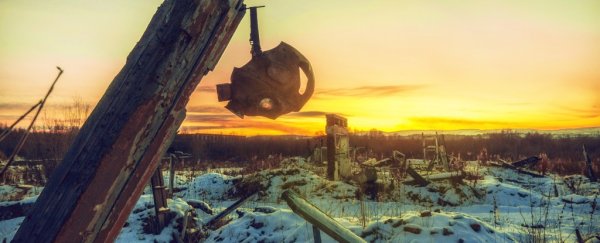It's called MAD. The notion that Mutually Assured Destruction would be inescapable if one nuclear superpower were to unleash its deadly arsenal against another.
The reasoning is that by launching a first strike against any nuke-toting enemy, the aggressor would inevitably provoke an automatic counter-attack – ensuring mutual, fiery annihilation. But aside from this fatal Catch-22, there's a scientific reason why even an uncontested nuclear war could quite literally be suicide.
A new, first-of-its-kind study led by engineer Joshua Pearce at Michigan Technological University suggests even in the 'best case scenario' – where the other guy doesn't fire back a single missile in retaliation – nuclear war could still kill millions of people in the country that does unleash its weapons.
It sounds crazy, but it's because of what the researchers call "environmental blow-back": not necessarily radioactive fallout (although yep, there's also that), but the severe drop in global temperatures as gigantic clouds of soot and smoke disperse in the atmosphere, hiding Earth from the Sun in a nuclear twilight.
This hazy, global blight would increase darkness and reduce rainfall, effectively unleashing a catastrophic chain of effects on agriculture, and leading to inevitable mass starvations as millions run out of food.
And remember, this is the best case scenario: it's what happens to the first-strike aggressor (and everywhere else) who doesn't even get fired upon. If you're lucky, you may somehow escape the wrath of immediate nuclear retaliation, but you can't hide from the way the wind blows.
In short, it's madder than MAD.
"Studies that have looked at nuclear winter scenarios before concentrated primarily on a full Russia-versus-US nuclear war and asked questions like 'could humanity survive?'," Pearce explained to Gizmodo.
"This was the first study to look at only a one-sided nuclear attack and its effects, specifically on the food supply, on the aggressor assuming the absolute best-case scenario."
In the researchers' calculations, if the US were to unleash a nuclear arsenal of 7,000 warheads against other countries, the environmental blowback would kick up some 30 trillion grams of soot to choke the world – generating a full-scale nuclear winter that would end up starving an estimated 5 million Americans.
One-seventh of that bombardment – firing 1,000 nuclear missiles at foreign targets – would still yield 12 trillion grams of soot, meaning some 140,000 people in the US could expect to die from lack of food.
It's only when the scale of the attack is dramatically reduced that the collateral recoil of environmental blow-back wouldn't amount to a nuclear suicide.
In the team's modelling, 100 nuclear weapons fired by the US would create zero American casualties due to starvation – with the resultant 4 trillion grams of soot (a so-called 'nuclear autumn') not being severe enough to cause fatal disruptions in the US food chain.
"With 100 nuclear weapons, you still get nuclear deterrence, but avoid the probable blowback from nuclear autumn that kills your own people," Pearce explains in a statement, noting the unthinkable consequences of ever unleashing more.
"If we use 1,000 nuclear warheads against an enemy and no one retaliates, we will see about 50 times more Americans die than did on 9/11 due to the after-effects of our own weapons."
The researchers note their numbers are on the conservative side, potentially representing a serious underestimate of the number of Americans that could die from starvation in such grave consequences.
They're also assuming that those who pull through will be able to survive the hardship of severe, widespread food rationing, which brings with it the potential for civil unrest, rioting, violence, and even more unnecessary deaths.
When they ran the numbers, the researchers admit even they were shocked by how bleak the picture looks.
"We thought because America has so much land and so much wealth – all the more modest nuclear bombing scenarios would hardly touch us," Pearce explained to Gizmodo.
"We were so wrong. The number of dead Americans from the use of our own bombs were staggering – far worse than all terrorists attacks to date combined."
Given this, and the 100-weapon threshold – which the researchers call a "national pragmatic safety limit" for any country to possess – the researchers say it's basically insane (and hugely expensive) to maintain larger arsenals that can never be touched.
By their estimation, the world's nuclear stockpile currently stands at about 15,000 weapons, some 7,000 of which belong to the US.
Per the blow-back hypothesis, given only nine countries possess nuclear weapons, the world should have no more than 900 in total – which means right now we're holding onto about 14,100 nukes that will, in effect, inevitably backfire.
"Politicians would never condone starving potentially millions of their own citizens by firing a large percentage of their nuclear stockpile," Pearce told Motherboard.
"Continuing to spend billions of dollars to maintain so many superfluous nuclear weapons we would never use because it would destabilise America makes no sense."
The findings are reported in Safety.
